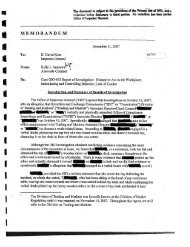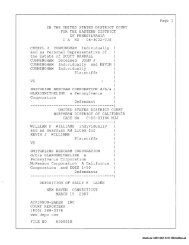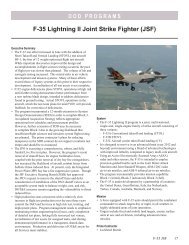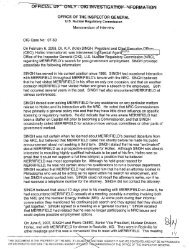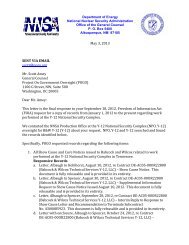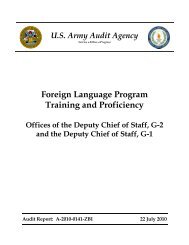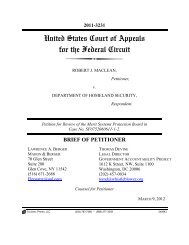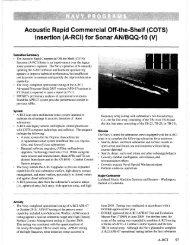The Pentagon Labyrinth
The Pentagon Labyrinth
The Pentagon Labyrinth
You also want an ePaper? Increase the reach of your titles
YUMPU automatically turns print PDFs into web optimized ePapers that Google loves.
84 | Follow the Money<br />
their behalf. 12 That was hardly surprising, given England’s prior service with<br />
the General Dynamics, Lockheed, Litton and Honeywell Corporations.<br />
Another name that catches the eye is the retired and superbly well connected<br />
four star Admiral Gregory Johnson, who earned the trust of his peers not only as<br />
the commander of far-flung fleets, but also as senior military assistant to<br />
Secretary of Defense William Cohen. Meanwhile, James L. Pavitt, formerly<br />
Deputy Director for Operations of the CIA, where, the biography informs us, he<br />
led the agency’s “operational response” to the 9/11 attacks, clearly makes a<br />
good fit on the board, as does retired four star army general William Wallace,<br />
who commanded a corps during the 2003 invasion of Iraq before ascending to<br />
the command of the army’s Combined Arms Center and ultimately the potent<br />
Training and Doctrine Command. Interestingly, Wallace’s CACI biography cites<br />
his role in developing the Future Combat Systems, a $160 billion baroque<br />
extravaganza infamous for monumental overruns and technical catastrophe and<br />
ultimately cancelled, but perhaps in such circles this is seen as a<br />
recommendation.<br />
Also on the CACI board sits James Gilmore, former governor of Virginia,<br />
whose biography is larded with references to his experience in the bountiful area<br />
of homeland security. Dr. Warren Phillips, a former academic with a expertise in<br />
oil pipelines and armored vehicles, along with a lawyer and a graduate of the<br />
railroad and natural gas industry round off the roster of this truly twenty-first<br />
century defense company, with 2010 sales in excess of $3 billion.<br />
No survey of the relationship between the corporate and military professions<br />
would be complete without comparing the differing fates of General John M.<br />
Keane and Admiral William J. Fallon. Both rose to dizzying heights in the<br />
military command structure; Keane retired as Vice Chief of the Army while<br />
Fallon was head of Central Command. In his latter years in the service, Keane<br />
shared the doubts of his fellow generals regarding the Iraq adventure, but kept<br />
his thoughts to himself, maintaining good relationships not only with Defense<br />
Secretary Donald Rumsfeld and Vice President Richard Cheney, but also with<br />
other politically significant factions in the corporate, political, and media<br />
worlds. Keane has long accepted a major share of the credit for conceiving the<br />
notion of a “surge” in Iraq – now deemed the key to victory – though the allimportant<br />
concept of buying off the insurgents would seem to have originated<br />
elsewhere. Keane has since become a highly sought after talker, advisor and<br />
12 One example suffices: A well informed critic of the lethal V-22 boondoggle was<br />
giving a scheduled briefing to an influential congressman on the drawbacks to the<br />
program, notably its tendency to kill the marines who were riding in it. Who should drop<br />
in, “just passing by,” but Mr. England, who enquired on the topic of discussion and then<br />
weighed in with what was obviously a very carefully prepared rebuttal, defending the V-<br />
22.



